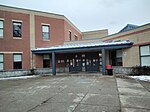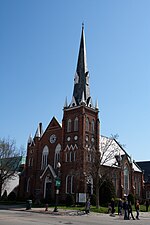St. Mildred's-Lightbourn School
1908 establishments in OntarioAnglican schools in CanadaEducational institutions established in 1908High schools in Oakville, OntarioPrivate schools in Ontario
St. Mildred's-Lightbourn School (commonly referred to as just St. Mildred's and abbreviated to SMLS) is an independent all-girls school in Oakville, Ontario, Canada with approximately 550 students from Preschool to Grade 12. The Junior school includes girls from pre-school to grade five. The middle school includes grade 6, 7, and 8. The senior school goes from grade 9 to grade 12.
Excerpt from the Wikipedia article St. Mildred's-Lightbourn School (License: CC BY-SA 3.0, Authors).St. Mildred's-Lightbourn School
Linbrook Road, Oakville Ennisclare Park
Geographical coordinates (GPS) Address Nearby Places Show on map
Geographical coordinates (GPS)
| Latitude | Longitude |
|---|---|
| N 43.46475 ° | E -79.66829 ° |
Address
Linbrook Road 1077
L6J 7S8 Oakville, Ennisclare Park
Ontario, Canada
Open on Google Maps






